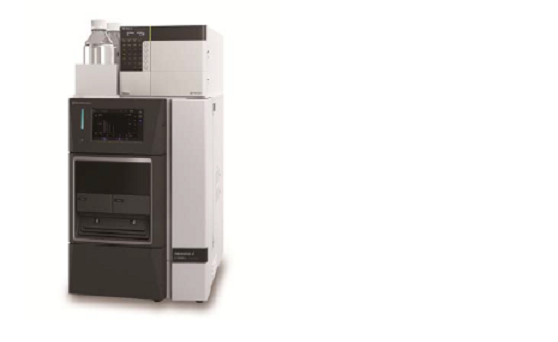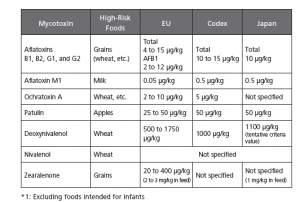Shimadzu targets mycotoxins and synthetic antimicrobials

The firm said the i-Series food safety analyzers support high-sensitive examinations for controlled components such as mould toxins (mycotoxins) and synthetic antimicrobials (sulfa-based and quinolone-based agents) in the raw materials of food products.
The two kits include analytical conditions for controlled components and special analytical columns for sample measurement.
They are based on the Nexera-i system of the i-Series of integrated high performance liquid chromatographs.
The kits consist of a quaternary gradient pump, autosampler and PDA detector in the compact system and an additional fluorescence detector.
The LC system used is a Nexera-i compact UHPLC.
Ten mycotoxin components detected in 14 minutes
Mycotoxins and synthetic antimicrobials must be extracted from food samples before analysis.
Shimadzu said a manual provides step-by-step protocols for the most appropriate extraction procedure for various different matrices.
Due to proprietary pre-treatment methods, derivatization of samples is not required, which streamlines the measurement process, added the firm.
Shimadzu said there are different ways of determining mycotoxin content.
“One of them is the ELISA method which poses problems in qualitative and quantitative analysis due to a lack in selectivity and a risk of false positives,” the firm told FoodQualityNews.
“Using this screening system, you can reduce the number of components to be measured in confirmation testing, and perform quantitation using a one point calibration curve.
“Also LC/MS is frequently used for the analysis of mycotoxins, but obviously this is a much bigger investment and requires far more expertise.”
The screening system can detect mycotoxins at and below the Maximum Residue Levels (MRLs) set for food products by the European directive, excluding food products for infants.
It can detect 10 mycotoxins applicable to wheat flour, rice flour and other grains as well as apples and milk samples at EU standard concentrations in 14 minutes.
These are aflatoxins B1, B2, G1 and G2, Aflatoxin M1, Ochratoxin A, Patulin, Deoxynivalenol, Nivalenol and Zearalenone.
Increasing demand and software side
Exported food must be tested for controlled components according to regulations of the destination country. Multiple cycles of analysis must be performed for each sample.
Shimadzu said there has been an increase in voluntary examinations for mould toxins included in raw materials to promote product safety.
“Target customers would be public inspection institutions, inspection organizations of food processing companies, contract laboratories and trading companies dealing with imported food.
“I think the food sector is the main target for potential future analyzers, where regulations are getting more strictly and quick screening methods are essential for consumer safety.”
When measurements are completed, results can be checked with the LabSolutions analysis software.
Measurement data, such as whether controlled components exceed threshold values or whether they have been separated properly from contaminant components, can be listed, enabling sample pass/fail judgements to be performed.
Synthetic antimicrobials are a food additive and drug for animals used in farm and fishery products to treat and prevent diseases.
With the antimicrobial screening kit 24 synthetic antimicrobials can be measured in chicken, pork and beef samples.
Qualitative information on the synthetic antimicrobials detected can be got by UV spectral library searches.








